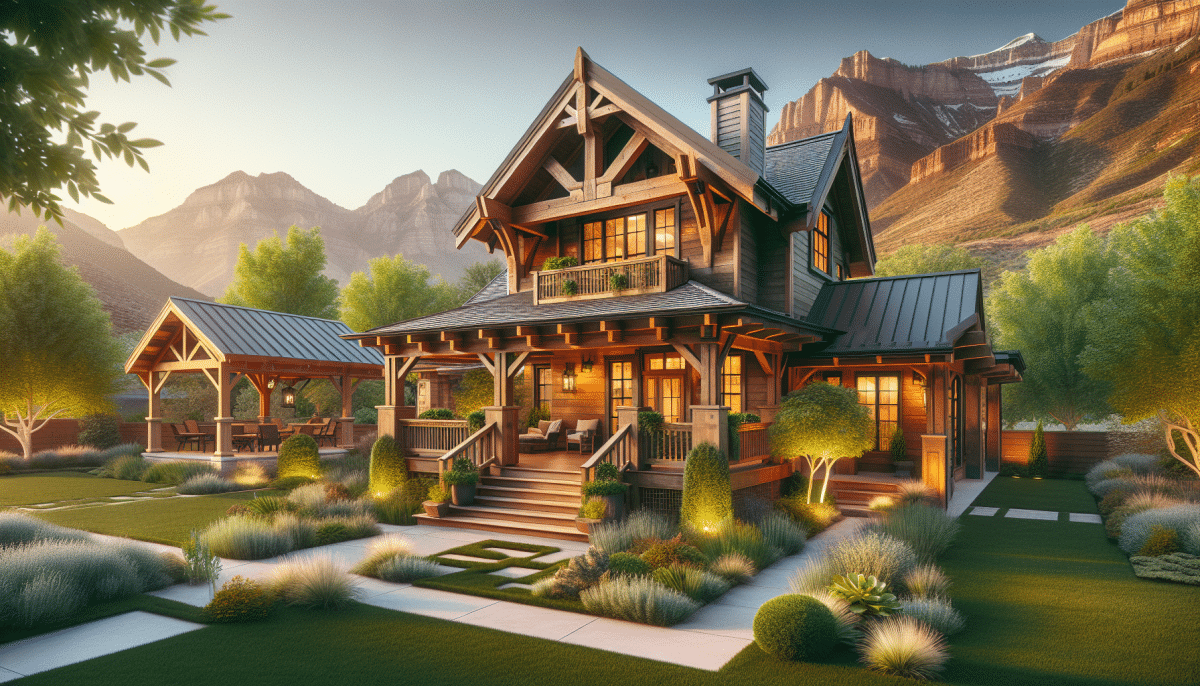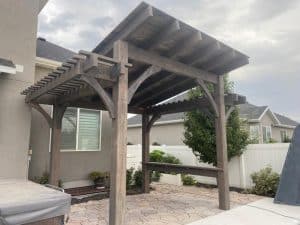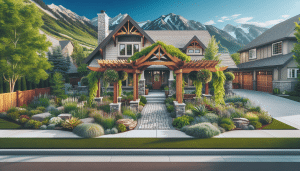When it comes to elevating your outdoor space, the decision between Timber and steel pergolas can pose quite a quandary. At Utah Pergola Company, we recognize that making the right choice to suit both aesthetic and practical needs can be difficult. This comprehensive guide is designed to assist homeowners like you in making an informed decision, ensuring your pergola perfectly complements your lifestyle. Dive in, and discover the benefits and distinctions of timber and steel pergolas with us.
Contents
Understanding Your Outdoor Needs
Before you even start contemplating the material for your dream pergola, it’s crucial to evaluate your outdoor needs and desires. Think about how you wish to use your pergola: is it for entertaining guests, creating a serene personal retreat, or adding value to your property?
Reflecting on your pergola’s purpose helps in narrowing down the options. Timber may evoke a rustic warmth ideal for cozy retreats, while steel offers sleek modernity perfect for entertaining a crowd. Identifying these requirements will steer you towards a choice that aligns with your vision and lifestyle.
The Aesthetic Appeal
A significant factor to consider is the aesthetic appeal that each material brings to your outdoor space. Timber pergolas exude a timeless charm while providing a natural, organic look that effortlessly blends with the environment. They evoke warmth, making them a favorite for nature lovers. Meanwhile, steel pergolas offer a contemporary aesthetic that can stand as a bold statement piece in your backyard.
Understanding the visual impact each material can create will help you choose a pergola that not only fits your style but enhances the overall look of your home.
Durability and Longevity
Both timber and steel pergolas have their unique attributes concerning durability and longevity. Timber, particularly when treated with preservation techniques, can withstand weather elements effectively while offering a toughness that can last for decades with proper care. However, it can be susceptible to pests and requires regular maintenance to preserve its appearance and strength.
Steel, on the other hand, is exceptionally durable, offering a lifespan that often exceeds that of timber. Its resistance to pests and weathering makes it a low-maintenance option. While it might slightly show aging signs over time, it retains structural integrity.
Maintenance Requirements
Let’s delve into the maintenance needs of each material. Timber pergolas require routine maintenance, including staining or sealing the Wood to protect against rot, pests, and UV damage. Regular checks for any signs of wear and tear help in prolonging the life of your timber pergola.
Steel pergolas are relatively low-maintenance, needing occasional cleaning to prevent rust and ensure longevity. Their sturdy nature means less time spent on upkeep, which can be a significant advantage for homeowners seeking a set-it-and-forget-it option.
Environmental Impact
In today’s eco-conscious world, considering the environmental impact is vital. Timber offers a renewable resource, provided it comes from sustainably managed forests. It also has a lower carbon footprint in terms of production, whereas it acts as an excellent insulator, contributing positively to energy efficiency.
Conversely, steel involves a more intensive production process, which can increase the carbon footprint. However, steel is highly recyclable, presenting a sustainable option when sourced responsibly. Balancing sustainability desires with your other criteria is essential in making an eco-friendly choice.
Initial Costs and Budget Considerations
Budget plays a considerable role in making your pergola decision. Timber is typically more affordable in upfront costs, which can appeal to homeowners working within a tighter budget or those prioritizing short-term expenditures.
Steel, despite having higher initial costs, can be more cost-effective in the long run due to its durability and low maintenance requirements. Weigh your immediate financial constraints against the potential long-term savings possible with steel when finalizing your budget.
Workability and Customization
Both Materials offer customization, but with nuances in workability. Timber is more adaptable, allowing for detailed carvings and adjustments on-site. Its pliability makes it ideal for those seeking unique, handcrafted designs.
Steel pergolas can also be customized, albeit with more precision involved during the design process. This characteristic can cater to highly contemporary or industrial aesthetics, yet it might limit on-site modifications.
Climate Suitability
Understanding your local climate is critical when selecting pergola materials. Timber may require more maintenance in humid or wet climates to guard against moisture-related issues. Alternatively, steel’s resistance to moisture makes it highly suitable for wetter climates; however, it can become hot in direct sunlight.
Consider your region’s climate patterns and how it aligns with each material’s strengths and weaknesses to ensure your pergola remains a cherished part of your home for years.
Installation and Build Time
Installation timelines and complexities can affect your decision significantly. Timber pergolas, with their simpler attachment methods, often allow for quicker installations and less structural preparation.
Steel pergolas may require more detailed planning and longer build times due to their weight and structural requirements. Understanding these differences can help you anticipate project duration and choose a timeline that fits your goals and lifestyle.
Expert Insights and Recommendations
We hope this guide helps demystify the decision-making process for choosing between timber and steel pergolas. Keep in mind these five crucial factors when making your choice:
- Functionality: Decide how you intend to use the space—whether for relaxation, entertainment, or adding value to your home—before selecting your pergola material.
- Style Preferences: Does your aesthetic lean towards rustic charm or modern elegance? Let your style guide your decision.
- Maintenance Commitment: Assess your willingness to maintain the structure and choose accordingly to ensure longevity and durability.
- Budget Constraints: Evaluate both immediate costs and long-term investments to ensure financial comfort throughout your pergola’s life.
- Climate Considerations: Select a material that will thrive in your local climate conditions to avoid premature wear.
Our in-house experts are always available to provide personalized advice tailored to your unique needs and regional factors. Connect with us to explore your options and start planning your dream pergola today.
By now, you should have a clearer understanding of the pros and cons of timber and steel pergolas. Still have questions? Reach out to us at 801-784-6082 or Request a Free Quote for your tailored solution!




